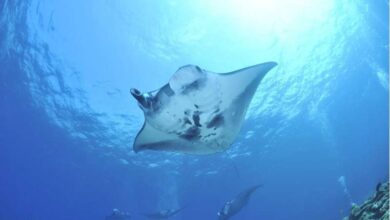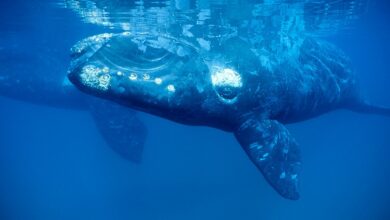This is the first confirmed live observation of the colossal squid, Mesonychoteuthis hamiltoni, in its natural habitat. The team on Schmidt Ocean Institute's Research Vessel Falkor captured footage of the nearly one foot squid at a depth of 1,968 feet, using their remotely operated vehicle "SuBastian" on March 9, during an Ocean Census flagship expedition searching for new marine life. Credit: ROV SuBastian/Schmidt Ocean Institute
Animals The WorldFirst-Ever Images of Colossal Squid, a Whole Century Later!
It took a hundred years, but we finally have the first images of a colossal squid, the world’s heaviest invertebrate, in the South Atlantic Ocean, its natural habitat.
“It’s exciting to see the first in situ [on site] footage of a juvenile colossal and humbling to think that they have no idea that humans exist,” says Dr. Kat Bolstad, an associate professor at the Auckland University of Technology. “For 100 years, we have mainly encountered them as prey remains in whale and seabird stomachs, and as predators of harvested toothfish.”
Discovered in 1925, a member of the Cranchiidae family – also known as “glass squids” – has an elusive nature. It avoids bright and loud research equipment due to its large, sensitive eyes. The baby squid discovered by the Schmidt Ocean Institute’s crew was seen some 60 meters below the surface. It had pearly eyes and organs, was transparent, and measured 0.3 meters in length. It will become opaque once its muscles thicken. The images captured will help better understand its diet, lifespan, or reproductive traits. Endemic to the deep sea near Antarctica, a colossal squid can reach 7 meters in length and 500 kilograms, making it the heaviest known invertebrate.



